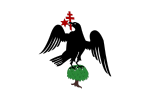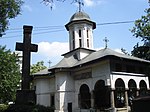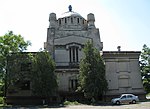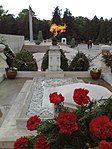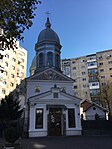Kingdom of Romania

The Kingdom of Romania (Romanian: Regatul României) was a constitutional monarchy that existed in Romania from 13 March (O.S.) / 25 March 1881 with the crowning of prince Karl of Hohenzollern-Sigmaringen as King Carol I (thus beginning the Romanian royal family), until 1947 with the abdication of King Michael I of Romania and the Romanian parliament's proclamation of Romania as a socialist People's republic. From 1859 to 1877, Romania evolved from a personal union of two vassal principalities (Moldavia and Wallachia) under a single prince to an autonomous principality with a Hohenzollern monarchy. The country gained its independence from the Ottoman Empire during the 1877–1878 Russo-Turkish War (known locally as the Romanian War of Independence), when it also received Northern Dobruja in exchange for the southern part of Bessarabia. The kingdom's territory during the reign of King Carol I, between 13 (O.S.) / 25 March 1881 and 27 September (O.S.) / 10 October 1914 is sometimes referred as the Romanian Old Kingdom, to distinguish it from "Greater Romania", which included the provinces that became part of the state after World War I (Bessarabia, Banat, Bukovina, and Transylvania). With the exception of the southern halves of Bukovina and Transylvania, these territories were ceded to neighboring countries in 1940, under the pressure of Nazi Germany or the Soviet Union. Following the abolishment of the 1923 constitution by King Carol II in 1938, the Kingdom of Romania became a de facto absolute monarchy, only to become a military dictatorship under Ion Antonescu in 1940 after the forced abdication of King Carol II, with his successor, King Michael I being a figurehead with no effective political power. The country's name was changed to Legionary Romania. The disastrous World War II campaign on the side of the Axis powers led to King Michael's Coup against Ion Antonescu in 1944, as a result of which the Kingdom of Romania became a constitutional monarchy again and switched sides to the Allies, recovering Northern Transylvania. The influence of the neighbouring Soviet Union and the policies followed by Communist-dominated coalition governments ultimately led to the abolition of the monarchy, with Romania becoming a Soviet satellite state as the People's Republic of Romania on the last day of 1947.
Excerpt from the Wikipedia article Kingdom of Romania (License: CC BY-SA 3.0, Authors, Images).Kingdom of Romania
Strada Frigului, Bucharest
Geographical coordinates (GPS) Address Nearby Places Show on map
Geographical coordinates (GPS)
| Latitude | Longitude |
|---|---|
| N 44.416666666667 ° | E 26.1 ° |
Address
Carol City Park
Strada Frigului 18
040584 Bucharest (Sector 4)
Romania
Open on Google Maps
